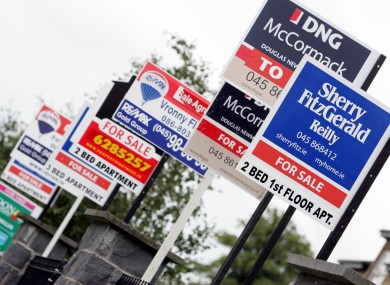House prices rose by an average of 8.5% during 2015, according to the latest House Price Report released today by Ireland’s largest property website, Daft.ie.
This national average hides a significant difference between Dublin, where prices rose by just 2.7%, and the rest of the country, where the average increase was 13.1%. The national average asking price in the final quarter of 2015 was €204,000, compared to €188,000 a year ago and €164,000 at its lowest point in early 2013.
In Donegal, prices between October and December 2015 were 9% higher than a year previously, compared to a rise of 1% seen a year ago. The average house price is now €126,000, 10% above its lowest point.
The different trends in Dublin and elsewhere marks a turn-around from 2014, when prices rose by 21% in the capital and by 9% elsewhere. This slowdown in Dublin inflation occurred at a time when inflation in Ireland’s other cities accelerated. Prices rose by an average of 20.7% in Cork in 2015, compared to 14.7% in 2014, and by 19.7% in Galway (compared to 16.3% in 2014).
In Waterford city, inflation has increased significantly to 18.6%, from 4.1% a year ago, while the most dramatic change occurred in Limerick city. A year ago, prices in Limerick city were still falling (by 1.3% year-on-year), but in the last twelve months they have risen by 22.3%. Prices in the city are now back at mid-2012 levels. Elsewhere in the country, inflation has accelerated from 8.8% in 2014 to 12.1% in 2015.
The total stock of properties for sale is now at its lowest point in nearly nine years, with just over 25,000 properties for sale nationwide. A year ago, there were nearly 30,000 properties on the market and the bulk of the reduction comes from outside the five main cities.
Commenting on the figures, author of the Daft.ie report, Ronan Lyons, said: “The dramatic slowdown in Dublin house prices in 2015 shows how effective the Central Bank rules have been. This has not been the case elsewhere in the country as house prices are lower relative to incomes and thus the new rules have not been as binding. Some have criticised the new rules as hindering new housing supply but the solution to a lack of supply is not stimulating demand even more. If supply is lacking, the solution to this must be found in reducing construction costs, not in giving borrowers access to potentially dangerous levels of mortgage credit.”
The full report is available to view by visiting http://www.daft.ie/report. It includes a commentary by Ronan Lyons, Assistant Professor of Economics at Trinity College, Dublin, and author of the Daft.ie report.










